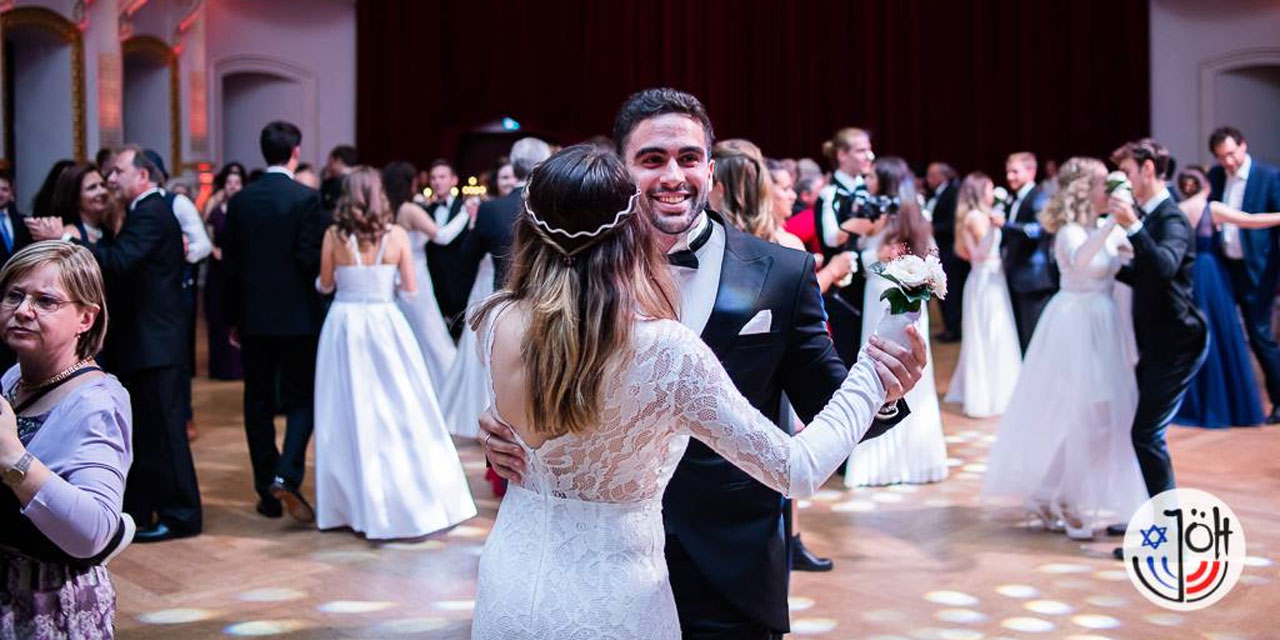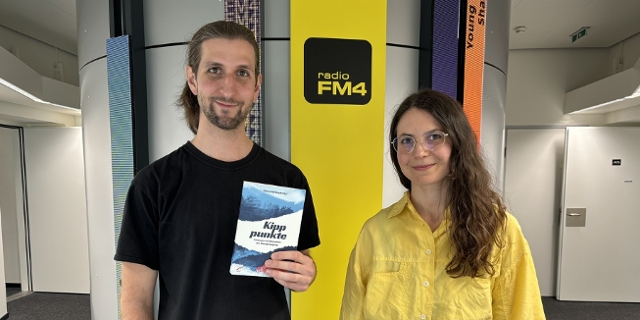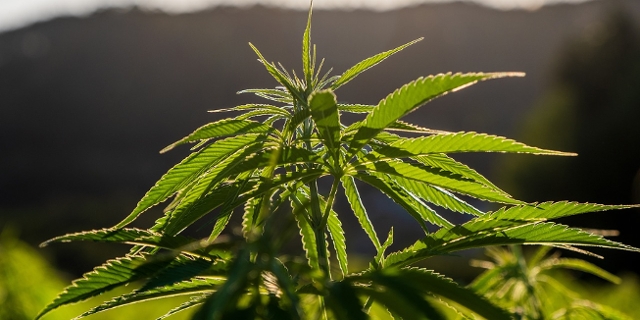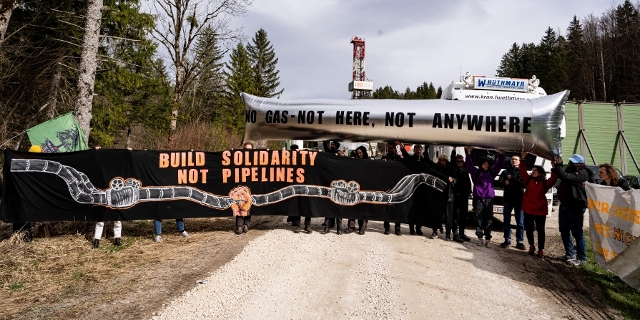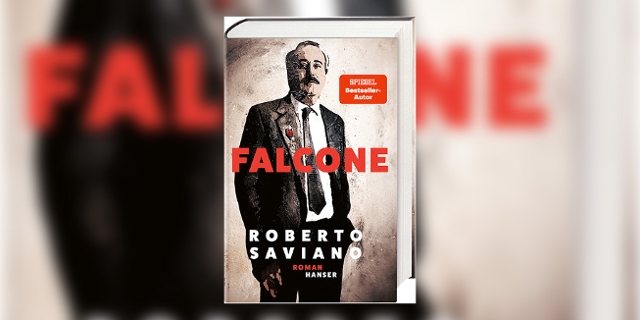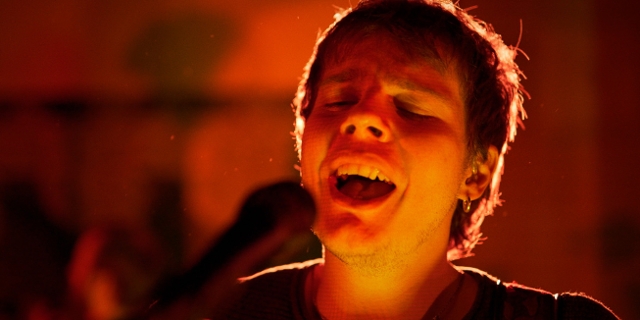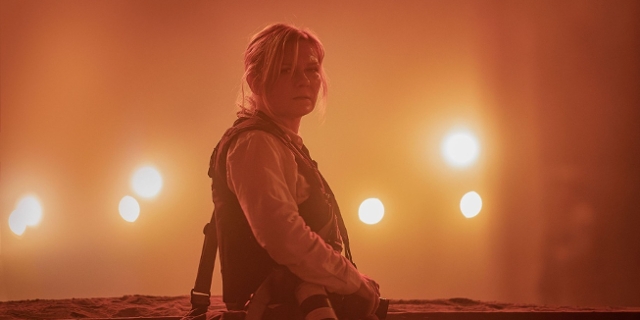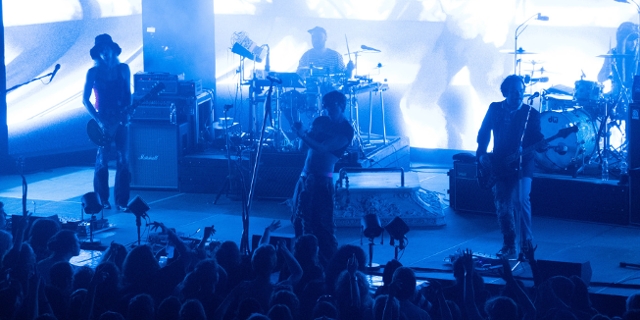What’s it Like to Be Young, Jewish, and Viennese?
By Lidia Jean Kott
Shortly after arriving in in Vienna, on a six-week fellowship through the US-Austrian Journalism Exchange, I felt something I never felt before. I felt Jewish.
I’m actually half-Jewish. My dad is Jewish (and an atheist) and my mom is Catholic. Growing up in Washington, D.C., and celebrating the Christian holidays, I never thought too hard about my Jewish roots. They certainly did not make me stand out. But when I got to Vienna, I felt like if the subject of my Jewishness came up, the atmosphere would change a little, people would get more serious. I never felt like I was being judged negatively for being half-Jewish, but I did sometimes feel like this part of me made people nervous.
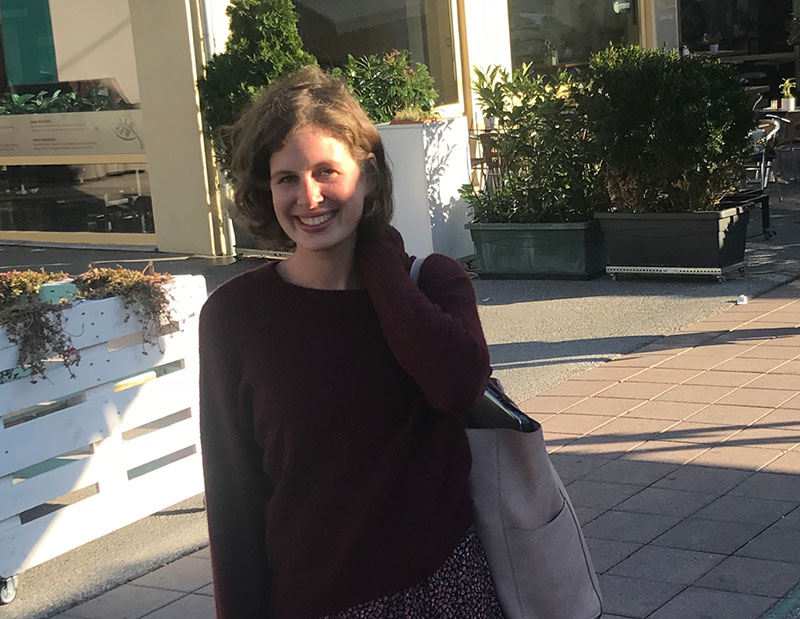
Lidia Jean Kott
Lidia Jean Kott, pictured here at Karmelitermarkt in the second district, spent six weeks in Vienna as a fellow for the US/Austrian Journalism Exchange.
Anna Goldenberg, a 29-year-old Jewish-Austrian journalist who often writes about Jewish life in Vienna, told me she’s experienced what I’m describing her whole life. “Depending on where people have grown up, they may have never in their life met a Jew,” she says, “They only have this understanding of this horrible, horrible history that they have, and then they meet me, and they really don’t know to act.”
Shalom FM4! Young and Jewish in Vienna.
What’s it like to be young, Jewish and Viennese? We will be answering that question by speaking to people from the many different segments of the diverse Jewish community in Austria’s capital. Lidia Jean Kott, at FM4 as a fellow for the US/Austrian Journalism exchange, takes you on a tour of modern Jewish life that goes beyond the second district of the city. Listen to it in FM4 Update on Saturday, October 20th from 12 to 1pm and is streamable seven days on demand.
Before the Holocaust, Austria was home to one of the largest Jewish communities in Europe, the population numbering around 185,000. During the war, about two-thirds of the Jews fled, and about 65,000 were killed. Now, there are only about 8,000 Jews in Austria, mostly all living in Vienna.
Before coming to Austria, I knew about the country’s history, but I never thought about what it meant for life in the present. What’s it like to be young and Jewish in Vienna today? I decided to find out, by talking to people from as many different segments of the Jewish community here as I could.
“Somehow, I became the role model”
The first thing I learned being part of a small and tight-knit community -- like the Jewish community in Vienna -- is that it’s hard to keep secrets. That’s something Lia Böhmer, a 29-year-old social worker with short cropped hair and two cats, had to consider when she started dating her first girlfriend: “I knew that the community is not very big, and I did not want that to come out behind my back,” she says, “So I came out quite soon.”
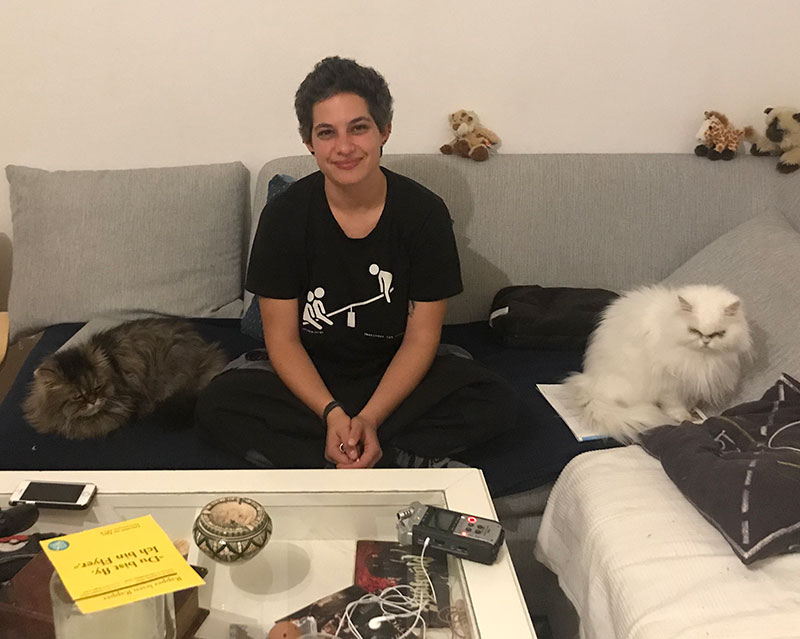
Lidia Jean Kott
Lia Böhmer, a 29-year-old social worker, says she didn’t know anyone who was openly out in the Jewish community when she was growing up.
Böhmer was 16. She says her parents are quite liberal and she was expecting them to take it well. They didn’t: “They told me, you don’t have to be so visible within the community,” she says, “I told them that’s actually the reason I am telling you, because I am who I am and I am not going to hide.”
Böhmer says at first she was the subject of many conversations within the Jewish community. But over the years, all that talk faded, and even her parents came around. “By now everybody knows ‚Lia is gay and that’s fine and she brings her girlfriends to the synagogue,’” says Böhmer.
When Böhmer came out, she became the first openly gay Jewish person she knew. She had no one to look up to. For those who have come out after her, it’s been different. "Somehow, I became the role model,” she says. “A few months ago, a friend who also grew up in the community told me she saw me coming out, and that it was okay, and that gave her the courage to come out as well.”
“I am still here”
Proportionally speaking, Austria is home to one of the largest Jewish Orthodox communities in Europe. For example, in Germany, only 1 to 2% of the Jewish population is Orthodox. In Austria, that number is somewhere between 20 to 40%, depending on how you define the term. And even though the Jewish has been on the decline in Europe since the Holocaust, the Orthodox community in Vienna is actually growing. Rifka, an Orthodox woman in her 30s who only wanted to use her first name, has felt the impact of this in a practical way. She says that when she was growing up, it was hard to find kosher food: “We had one small bakery, and one mini-market ” she says, “Anything you wanted special, like tuna, you had to bring from New York.”
Today, as Rifka gives me a tour through the second district, the center of Orthodox life in the city, she points out a grocery store that has gluten-free options. A butcher shop. A pizza place that delivers. “That is for us very exciting,” she says, with a smile. Boys wearing kippahs race past us on scooters, their payot, or curls, flying in the air.
Rifka is a history teacher at an Orthodox Jewish girls school, and to her, all this development isn’t a sign of new life, as much as a sign of old life restored. Even if you don’t teach it, history is impossible to escape here. Rifka points out to me abandoned lots where synagogues stood before World War II. There are also monuments and memorials.
On the street we are standing on, Leopoldsgasse, one man’s memories from November 10, 1938, the day after „Reichskristallnacht“, are typed onto the sidewalk in bold, black letters. This installation is part of a project by the artist Catrin Bolt, who went through archived materials to find first-person accounts from the Holocaust mentioning street names, and printed portions of those accounts in the exact spots where they occurred. “I arrived at the corner, and I could hear the terrible noise with which our school was being destroyed,” Rifka translates for me, “The principle was lying in his own blood. They had trod on his face, and his nose bridge was broken.”
Rifkta tells me that this man, who did not want his name made public when this memorial was created, ended up in Auschwitz. He survived though, and returned to Vienna. Around the corner, Rifka shows me the apartment building where his family lives. It has a huge wooden door, and carved into it, at the very top, there’s a little Jewish star. “I always think that it is here to symbolize “I am still here,’” she says, pausing for a moment.
“Austria is my home”
Only a few Viennese-Jews who survived the Holocaust returned to the city. Today, Vienna’s Jewish community is mostly made up of immigrants, either first, second or third generation. And one of the largest immigrant communities, the Bukharians from Central Asia, came here, in large part, by accident. They were part of a wave of 300,000 Jews fleeing the USSR in the 1960s through the 1980s, who passed through Austria on their way to Israel. Since life in Israel was often tumultuous, some attempted to return home. But the USSR refused to take them back and they ended up stranded in Austria. “We got stuck here,” is how Boris Kandov a 28-year-old Bukharian lawyer explains what happened to his family, “But now Austria is my home.”
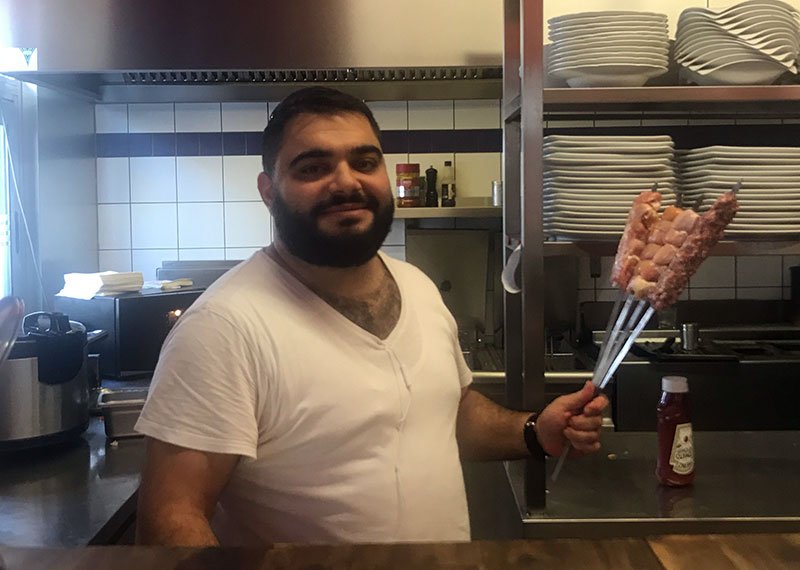
Lidia Jean Kott
Michael Levy is a chef at the Bukharian Jewish restaurant Bahur-Tov.
Kandov told me that if I want to understand what makes Bukharian life special, I have to try Bukharian food. It’s a fusion of Middle Eastern food, Chinese food, and more. It’s also Kosher, of course. On Kandov’s recommendation I visit Bahur-Tov, a restaurant in the second district that has been doing brisk business for 18 years, serving, for example,“Shanghai beef,” “fried noodles Mongolian style,” and even a “schnitzel pita sandwich.”
Kandov says he wouldn’t want any other home other than Austria. He loves “the people, the infrastructure, the way of life.” Sometimes when things come together by accident, it works out better than anyone could have planned. I’m not too sure about the pita schnitzel though.
“Right, other right, left, right, and one more time, backwards now!”
Alexander Fodor, a 19-year-old student at the University of Vienna, is trying to teach me the box-step, and things were going well until he told me to go backwards.
For my last story, I’m at the Jewish “Bal Paré”, put on on my by the Jewish Student Union of Vienna. The first Jewish Waltz was held in 1948 to raise money for students whose parents were killed during the Holocaust, and to show the world that Jewish culture still existed in Vienna, after the war. In recent years, it fell off the Viennese ball calendar, but this year, for the first time in over a decade, it’s back, and over 200 students from all over the world came to see Jewish-Viennese culture today.
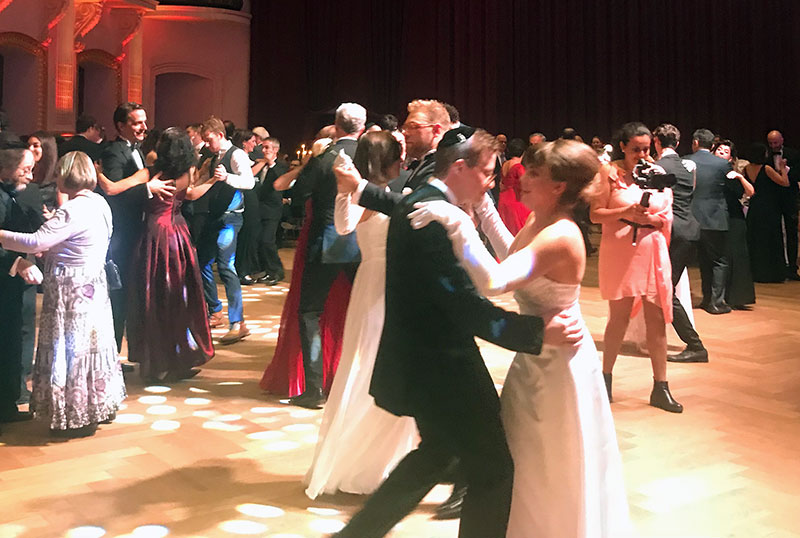
Lidia Jean Kott
The Jewish Student Union recently a Jewish waltz this time, for the first time in over a decade.
I ask Alexander Fodor why reviving this dance was important to the Jewish Student Union, and he told me it’s because of all it brings together, “the Viennese, and Jewish, inter-generational traditions,” and because of the opportunity it provides to share all that with foreigners, like me. “Showing them what we do, the Jewish in Vienna!” he says. He did his best. I sort of mastered the box step.
Near the end of my time in Vienna, my phone started auto-correcting my name from “Lidia Jean” to “Lidia Jew,” probably because of all the emails I’ve been sending out with that word in them. I wouldn’t say that when I go back to the United States I will consider more Jewish than before, but I do feel like it’s a part of myself and a word that I understand a little bit better now.
FM4 Update Special: Shalom FM4! Young and Jewish in Vienna
What’s it like to be young, Jewish and Viennese? We will be answering that question by speaking to people from the many different segments of the diverse Jewish community in Austria’s capital. Lidia Jean Kott, at FM4 as a fellow for the US/Austrian Journalism exchange, takes you on a tour of modern Jewish life that goes beyond the second district of the city. Listen to it in FM4 Update on Saturday, October 20th from 12 to 1pm and is streamable seven days on demand.
Publiziert am 19.10.2018







